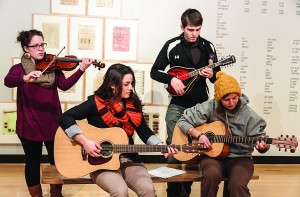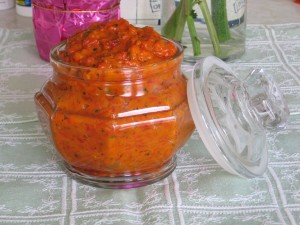This upcoming Tuesday in Java 101 the CAB Coffeehouse will feature a bluegrass-focused performance by students Abby Talone, Zach Kitchen, Colleen Winton, and Annie Hassen. These four have been playing music together for some time, including a performance last semester at the alumni coffeehouse that took place during Homecoming weekend. Aside from Coffeehouses, several of the group’s members have also played for Koinonia on Sunday nights.
 The two hours will feature a variety of instruments. Annie Hassen will be playing the violin, a key element of traditional American folk music. Junior Zach Kitchen will be playing the mandolin, while fellow junior Colleen Winton will be performing on both the acoustic guitar, and also egg shaker. In addition to more traditional folk instruments, Winton will be contributing her whistling skills to the performance. Senior Abby Talone, who is a Koinonia leader, will add her strumming talents, playing on her Martin & Co. acoustic guitar. The four are intending to incorporate a variety of harmonies and vocal styles into their performance to emphasize their “folky feel”, as Talone put it.
The two hours will feature a variety of instruments. Annie Hassen will be playing the violin, a key element of traditional American folk music. Junior Zach Kitchen will be playing the mandolin, while fellow junior Colleen Winton will be performing on both the acoustic guitar, and also egg shaker. In addition to more traditional folk instruments, Winton will be contributing her whistling skills to the performance. Senior Abby Talone, who is a Koinonia leader, will add her strumming talents, playing on her Martin & Co. acoustic guitar. The four are intending to incorporate a variety of harmonies and vocal styles into their performance to emphasize their “folky feel”, as Talone put it.
The group chose songs that would best showcase their intended sound and create the desired casual and rustic ambiance. The selection of songs they will be covering include songs and artists such as “Flowers in Your Hair” by The Lumineers, “Your Love is Strong” by Jon Foreman, and “Like the Dawn” by the Oh Hellos. Additionally they will cover other artists such as the popular English folk rock band, Mumford and Sons, the Christian acoustic folk band, All Sons and Daughters, and similar folk-based musicians.
This American traditional style of music, or folk music, dates back to the early 1930s, from which it developed into our current genre of “hipster” or “indie” music. However, folk music is an intrinsic part of our history as Americans, as it incorporates elements from both the blues, country, bluegrass, gospel, and old-timey – a picture of how the integration of the American people as a nation began with the integration of music.

